Title : Enhancing antibiotic therapy for SSTIs: The diagnostic role of punch biopsy
Abstract:
Introduction: Skin and soft tissue infections (SSTIs) include a range of conditions affecting the skin layers and underlying connective tissue, including erysipelas, cellulitis, impetigo, and ecthyma. These infections are among the most common reasons for outpatient visits and hospital admissions, with a higher prevalence in warmer, low-income, and resource-poor regions. While diagnosis is primarily clinical, accurate identification of the causative pathogen is essential for targeted therapy and effective antimicrobial stewardship. Traditional diagnostic methods, such as blood and lesion cultures, often have limited sensitivity, underscoring the need for more reliable approaches. Skin biopsies, particularly punch biopsies, offer a minimally invasive, bedside-accessible option that enhances diagnostic accuracy, revealing pathogens in 20-30% of cases. These biopsies can be categorized as incisional (e.g., scraping, curettage, or punch biopsy) or excisional (e.g., shaving or scoop), with punch biopsies standing out for their simplicity and lack of requirement for advanced surgical skills. Given the potential for rapid progression and complications - such as treatment failure, bacterial resistance, or disease advancement - early and precise diagnosis is critical. It enables appropriate stratification of clinical and surgical treatments, reduces hospital stays, and improves patient outcomes, particularly in life-threatening cases.
Methods: A retrospective study evaluating patients admitted to Pontifical Catholic University of Campinas (PUC-Campinas) Hospital with a diagnosis of skin and soft tissue infection between 2023 and 2024. All patients over the age of 18 diagnosed with an acute (less than 14 days of symptoms) skin and soft tissue infection by an infectious disease physician were included.
Results: "A total of 83 skin biopsies were performed at PUC Campinas Hospital over 17 months, between January 2023 and May 2024. Of these, 24 (29%) were positive for the presence of bacteria, while 59 (71%) were negative. Among the positive cultures, 11 different bacterial species were identified, distributed across 6 genera. The most prevalent genus was Staphylococcus, with 6 species, predominantly S. aureus (11 cases). Additionally, 5 of the 24 positive biopsies (21%) identified Gram-negative bacteria, while 7 isolates (29%) were resistant to oxacillin. Notably, in 6 of the 24 positive cultures (25%), the initial empirical antimicrobial regimen required adjustment based on culture results, which was associated with a reduced length of hospital stay.
Conclusion: This study reinforces the role of punch biopsy as an effective tool for improving SSTI diagnosis, particularly in cases where clinical assessment alone is insufficient. While the majority of skin and soft tissue infections (SSTIs) are caused by community-associated Gram-positive bacteria, such as S. aureus and S. pyogenes, infections by resistant bacteria and Gram-negative organisms can also occur. These cases often lead to errors in empirical therapy, highlighting the need for more accurate microbiological diagnosis. By integrating punch biopsy into routine SSTI diagnostics, clinicians can enhance pathogen identification, optimize antimicrobial therapy, and reduce resistance. Collaboration between infectious disease specialists, dermatologists, and microbiologists is key to refining SSTI management and improving patient outcomes.



